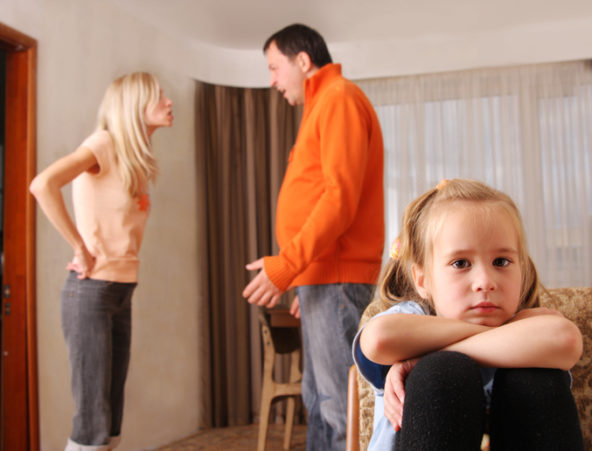A new 11 country survey, which includes Ireland, examines the relationship between cohabiting couples compared with married couples. It finds that cohabiting couples are less likely to be satisfied with their relationships and family life generally. This has implications for the stability of those relationships and therefore, for children. Professor Patricia Casey wrote about the survey in her Irish Independent column yesterday. You can find the text of her article below.
It’s not fashionable – but when parents marry rather than just cohabit, children are better off
By Professor Patricia Casey
Throughout the Western world, there has been a dramatic growth in cohabitation between couples prior to marriage since the 1980s. This was driven, in all probability, by the sexual revolution of the 1960s and 70s. The idea behind cohabitation, or trial marriages as they were then called, seemed intuitively good. These couplings would assist boyfriends and girlfriends in knowing how well they got on together in a marriage-like but informal arrangement as a precursor to marriage. Successful cohabitation followed by marriage should, according to the theory, result in more successful marriages and a reduction in divorce.
Over time, cohabiting relationships became normalised and proved for some a substitute for marriage. The slip of paper confirming the legality of marriage was psychologically shredded in favour of a progressive, less institutionalised way of arranging personal lives. Understandably, these couples had children, like their married counterparts. The intuition of the time now seems misguided, as study after study shows marriages where the couple previously lived together are more likely to break down compared with those where pre-marital cohabitation did not happen; a shrinking number nowadays.
But a second group exists also – those who have foregone marriage completely but have children with their cohabiting partner. A new study throws light on this group and examines whether these relationships are as stable as marital ones.
‘The Global Family and Gender Survey (2018)’ examined the quality of relationships and family life among cohabiting and married couples with children. It examined this question in 11 countries including Ireland. This is the first international study of marriage and cohabitation to include Ireland, thus allowing cross- national comparisons. In each country, 2,500 people who were either cohabiting or married, and had children less than 18 years of age, were interviewed.
All were asked if they had “serious doubts” about their relationship in the previous year. For Ireland, 18pc of married couples with children have had such doubts, compared with 34pc of cohabiting couples. This is a ratio of almost two-to-one. In the UK, it was 22pc and 39pc respectively. Among all but one of the countries studied, the pattern of higher levels of doubt about the long-term prospects for their relationship among those who were cohabiting, compared to those who were married, was replicated.
The second question was about the importance of their relationship to them, and again the patterns of responses were similar. In Ireland, 58pc of cohabitees said their relationship was the most important thing, as against 72pc of married people. In the US, it was 56pc and 75pc. The pattern for each of the questions holds after socioeconomic status and educational level are controlled, meaning differences in economic status, for example, does not explain the instability of cohabitation.
In the 2016 Census, Ireland saw a huge jump in the number of people cohabiting. In 1996, there were 31,000, in 2016 there were 152,000. Almost 100,000 children were born into these relationships.
While the study discussed here does not present data on how many children were affected by the potential instability in these relationships, others have attempted to quantify this. The ‘Fragile Families Study (2015)’, from the US, found only one-in-three children born into cohabiting relationships continue living in the two-parent unit, while three-in-four children born to married parents do so.
Other data from the ‘World Family Map Study’, at Georgetown University, report similar levels of cohabitation, marriage and patterns of family breakdown.
These figures, if extrapolated to the Irish data, are worrying and suggest large numbers of children every year will experience the collapse of their parents’ relationship, particularly if they are not married.
Why might cohabiting couples be more vulnerable to splitting up than those that are married? One possibility is that couples who live together have drifted into this as a simple next step after dating for a few months but with no thoughts of permanence at some future point.
When problems arise they find extricating themselves just too difficult. Having the wherewithal to change from ‘being an item’ to being on one’s own again, to moving to new accommodation, to even returning to the parental home, may be just too difficult and so the couple drift along in an unsatisfactory relationship. Some researchers describe “sliding, not deciding” into a permanent-type set-up with no formal commitments.
To date, discussion about the nature of family life and about which family form is the most stable for children has been out of bounds. Fear of offending those parents in non-traditional units, who are striving to do their best, has halted informed debate about this. Based on the data from a number of studies, all family forms are not the same. This should be acknowledged if we, as a mature society, wish to serve our future generations in the best manner possible. Young couples should also be aware that contrary to fashionable opinion, the wedding certificate is not just a symbol of patriarchal oppression but a document that of itself has power to protect our children.
















